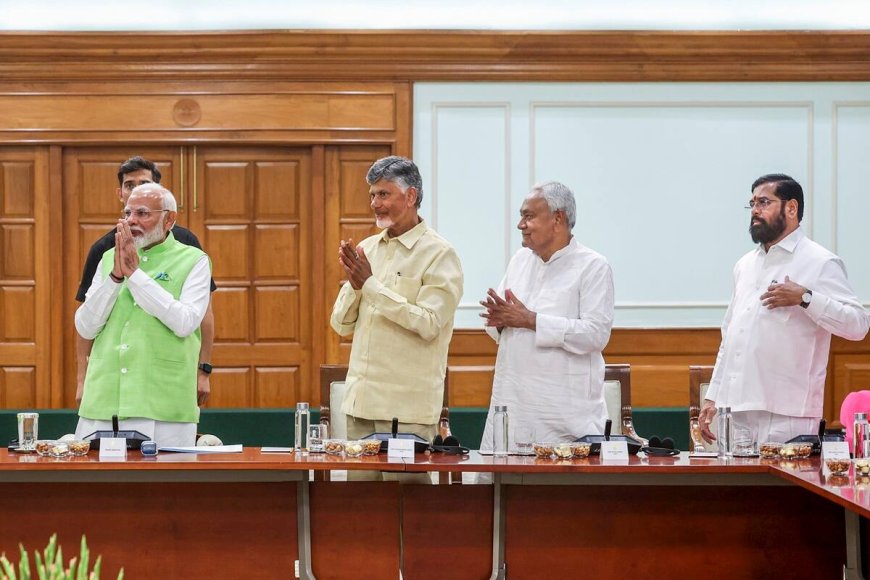NDA 3.0: Stability in Sight or Seeds of Discord? Decoding the Cabinet Portfolios and Political Signals
As NDA forms government for a historic third term, we decode the new cabinet portfolios and what they reveal about the coalition's power dynamics, policy focus, and future challenges.

Decoding the Cabinet Portfolios and Political Signals
As the Bharatiya Janata Party (BJP) secures a third consecutive term in power, this time with a reliance on key allies, the newly unveiled cabinet of NDA 3.0 raises crucial questions about the future of Indian politics. Will the coalition bring governance stability, or are we looking at a politically fragile setup marked by bargaining and friction?
This article breaks down the key cabinet appointments and interprets what they signal in terms of policy direction, alliance dynamics, and national priorities.
The Numbers Behind the Power: A Coalition by Necessity
Unlike the overwhelming majorities of 2014 and 2019, the 2024 Lok Sabha election results forced the BJP to rely heavily on allies like the Telugu Desam Party (TDP) and Janata Dal (United) to secure a working majority. The BJP won 240 seats, short of the 272-mark, and now hinges on the support of key NDA partners.
This shift changes the power equation considerably, introducing the possibility of internal dissent and policy deadlock, depending on how cabinet responsibilities are balanced.
For a detailed analysis of the 2024 election verdict, refer to this Election Commission Report on General Elections 2024.
Key Cabinet Appointments: Who Got What and Why It Matters
The composition of the cabinet offers deep insight into how the BJP plans to retain control while appeasing coalition partners. Some of the notable appointments include:
1. Amit Shah – Home Ministry (Continued)
Retaining Shah in the Home Ministry is a signal of continuity in internal security policy, particularly in handling sensitive regions like Kashmir and tackling Naxalism. This also ensures that BJP's ideological agenda remains strong within the central administration.
2. N. Chandrababu Naidu’s TDP – Key Infrastructure Portfolios
Allocating Rural Development and Civil Aviation to TDP shows a clear nod to Andhra Pradesh’s development concerns, but also gives the ally a powerful platform for visible public works—a smart electoral move by the BJP.
3. Nitish Kumar’s JD(U) – Agriculture and Skill Development
These portfolios reflect JD(U)’s focus on Bihar’s needs and are designed to maintain peace in the alliance, though the real power remains concentrated with BJP heavyweights.
For a complete list of ministers and their roles, visit the PIB Press Release on NDA 3.0 Cabinet.
Power Sharing or Power Play?
While the cabinet appears balanced on paper, political observers note that the BJP has kept core ministries such as Finance, Defence, External Affairs, and Home under its fold. This approach minimizes the risk of policy dilution while giving allies just enough room to remain cooperative.
This centralization of power could, however, trigger long-term friction, especially if allies feel underrepresented in decision-making.
Read a deeper analysis from PRS Legislative Research to explore historical coalition behaviors in India.
What This Means for Key National Policies
The cabinet structure hints at continuity over disruption, but certain portfolios hint at new directions, such as:
-
Green Energy Ministry Revamp: Signaling a stronger push toward renewable infrastructure, likely influenced by global climate commitments.
-
Revived Focus on Skill India: Especially through JD(U), possibly aligned with employment challenges post-pandemic.
-
Increased Federalism in Governance: Due to coalition compulsions, BJP may adopt a more consultative approach in policy-making, at least in the short term.
Risks Ahead: Can This Coalition Last?
While the optics suggest harmony, coalition governments in India have a mixed track record. The longevity of NDA 3.0 will depend on:
-
How well the BJP balances assertiveness and accommodation
-
Whether allies like TDP and JD(U) get enough political capital to satisfy their voter base
-
Response to economic challenges, including inflation, job creation, and global trade tensions
Final Thoughts: A Test of Political Maturity
NDA 3.0 is not just a new term—it's a political experiment in power sharing, arguably the first real test of BJP’s coalition management skills in a decade. Whether this results in governance synergy or inter-party stalemates remains to be seen.
For in-depth political commentary and ongoing updates, follow reputable outlets like The Hindu’s Politics Section and Scroll.in.



















































